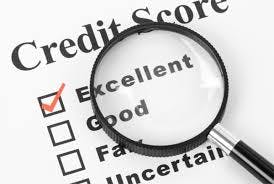Many problems can arise on the path to mortgage approval. Awareness is the first step to avoiding them. By understanding what can go wrong during the process, you’ll have an easier time keeping yourself on the right path. This article outlines three of the most common problems borrowers encounter during the mortgage process — and how to avoid them.
Problem #1 – Too Much Debt
When you apply for a mortgage loan, the lender will check your debt-to-income ratio. They will want to see how much money you earn compared to how much you owe. The rule of thumb is 45%. Mortgage lenders prefer that your overall debt burden is no greater than 45% of your gross monthly income. If your debt is too high in relation to your income, the lender will view you as a bigger risk. This can hurt your chances of qualifying for a loan at a good interest rate.
Possible Solutions
The solution here is simple. Reduce your debt. It may be easier said than done. But if you want to qualify for a good mortgage loan, you’ll need to have your debt under control. The ideal scenario is to keep your total debt-to-income ratio below 45%. Below 35% is even better. If you are unable to accomplish this, you could always shop for a more affordable home that would require a smaller loan. (Just note that these ratios are not set in stone. Some lenders will allow higher debt ratios for otherwise well-qualified borrowers.)
Problem #2 – Not Enough Income
If you apply for a loan that a lender thinks you can’t afford, your chances of being approved are slim. This may be a good thing, as it would prevent you from amassing more debt than you can cover with your income, which can lead to bigger problems like a foreclosure.
Possible Solutions
An obvious solution, of course, is to increase your income. But this too is easier said than done. One option would be to use a co-signer, such as a parent or other relative — somebody with good credit standing and a favourable debt-to-income ratio. Another option is to shop for a lower-priced home so that you can clear the income hurdle. (Refer to the general rules for debt-to-income ratio under problem #1 above.)
Problem #3 – Low Credit Score
Credit scores range from 300 to 900, with 900 being the highest and best. The higher your credit score, the easier it will be to qualify for a mortgage loan. You can also get a better interest rate when your credit is strong, above 800 is best. But when your credit is low, 699 and under is considered a bad score, you could have problems qualifying for a loan, and you’ll likely pay a much higher interest rate. This means a bigger mortgage payment each month. As a general rule, lenders want to see a credit score of 760 or higher for home loan approval.
Possible Solutions
The first thing to do is make sure you don’t have errors on your credit report that are dragging your score lower than it should be. Request a copy of your credit report from both Equinox and TransUnion credit reporting agencies. Check your report to make sure there aren’t any errors. If the reports are accurate, and you simply have a low credit score, you’ll have to work on improving your credit. Pay your bills on time, and try to pay off as much debt as possible. In time, this kind of financial responsibility will help you increase your credit score.


